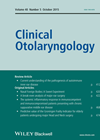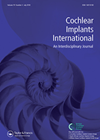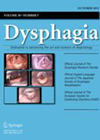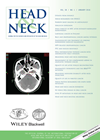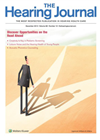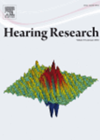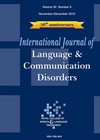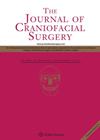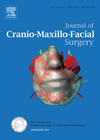
Journal Reviews archive for March 2016
Is major ear surgery financially viable?
It is difficult to ignore the present reality in the NHS that understanding clinical coding is perhaps of more relevance to the practising clinician than the human genome! Clinician engagement is becoming more essential to protect patient care and maximise...
The perils of poor postop blood pressure control
This retrospective case control study reviews 621 patients undergoing thyroid surgery over a 10-year period from 2002-2012 looking at postoperative haemorrhage rates. This potentially catastrophic complication warrants close analysis in order to best discern how it can be minimised. The...
Can intraoperative electrically evoked auditory brainstem responses predict the outcome of cochlear implantation?
Electrophysiology during cochlear implant surgery remains an issue of debate among the various centres. In the present study, the latencies and quality of the eABR waveforms from 74 adult implanted patients were analysed. In addition, four children with severe cochlear...
Hearing preservation and device benefit following implantation of short or hybrid electrodes
Hybrid or short electrodes have increasingly been used in the literature in order to combine electrical with hearing-aid stimulation. However, hearing preservation of the residual low-frequencies are of utmost importance in this attempt. The present study compared hearing preservation and...
Changes in swallowing function after thyroidectomy
Evaluation of functional impact following thyroidectomy tends to be focused on voice quality. The aim of this study was to document early (seven days postoperatively) and late changes (60 days postop) in swallowing function after thyroidectomy. A preoperative naso-endoscopic evaluation...
Risk factors for TORS treatment failure in HPV-related oropharyngeal cancers
HPV-related squamous cell cancers are an increasingly common cause of malignancy in the oropharynx. There is evidence that these cancers are associated with a significantly improved overall survival compared to conventional HPV-negative tumours. The optimal treatment for such cancers is...
Infant mental health and hearing loss
This interesting editorial explores an aspect in the field of research dedicated to promoting healthy social and emotional development and the prevention and treatment of mental health problems in very young children. Since babies learn through primary attachment relationships with...
Otolith dysfunction in congenitally deaf adults
This paper helps to further define the profile of ocular and cervical vestibular-evoked myogenic potentials (o and c VEMPs) in patients with congenital profound sensorineural hearing loss (PSHL). It highlights the prevalence of otolith (saccular and utricular) dysfunction that exists...
Verbal memory and chronic speech and language disorders following stroke
Stroke is often associated with chronic language disorders like aphasia and apraxia as well as memory impairments. Studies have found that memory problems in stroke are often verbal memory disorders. This review article discusses the association between language and short-term...
Anatomy for extended sinus surgery
In the world of image guidance and pushing the boundaries of what can be achieved endoscopically the assessment and understanding of preoperative imaging is critical for success. This paper highlights the anatomical variations in the pterygopalatine and sellar regions. The...
Otoplasty equals happiness
There are frequent criticisms of procedures that are viewed as cosmetic therefore of no benefit to health. Here a German group have looked at the benefit of otoplasty on quality of life. They point out that ‘beautiful people have an...
Sialendoscopy assisted excision of parotid stones
This is a retrospective paper from China that looks to assess the efficacy and safety of sialendoscopy with a combined transoral or transcutaneous approach for the removal of parotid stones. Sialolithiasis is known to be a cause for obstructive parotid...

